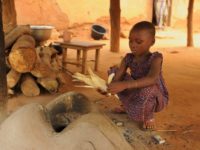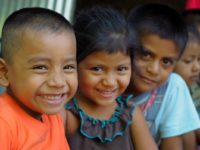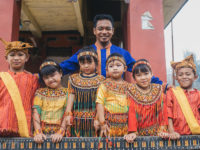Our child development centers are distributed in different types of settings in Mexico; the biggest difference is between urban and suburban areas.
In the context of this blog post, the terms “urban” is defined a bit differently than in the big cities of the developed world:
An urban area corresponds to small communities concentrated in cities with more than 10,000 inhabitants, with the majority of public services at hand.
The main difference between an urban and suburban area is in the communication and roads that provide all the supplies and raw materials needed for life.
The main cities are important areas of influence where the major cultural, political and government events take place. Great infrastructure, equipment and services are distinct. Drainage, water, pavement, electricity, schools, hospitals, parks and amusement parks are all found in cities. The main administrative and government offices are located here.
Organized commerce and industry provide most of the job opportunities, but there is a segment of the population that works providing services to the offices, homes and factories.
It is very common for these cities to have groups of such service providers establish their own colonies, our “urban” setting, which lack the same level of comfort or community services as the rest of the city. These communities grow and develop without much planning, and do not have services like parks or clinics. They are greatly affected by political turmoil, high food costs, and lack appropriate medical and school services and security. This is where we serve.
Drugs, gangs and a high rate of violence are terrible problems in these communities. Single mothers are also common, and children spend many afternoons wandering the streets.
Not many families own property. Rented homes are the common denominator here. Many times three or more related families crowd into small, rented homes.
Homes built and owned by families house a long line of working-class grandparents, parents and children who all have contributed with their labor to be able to share a small room. Homes are usually built, with small rooms, around a common patio, and have common facilities or restrooms. Families are very close, and the grandparents hold a high rank in the family hierarchy.
In many cases the common room serves as the kitchen with a big table, and other rooms are designated for each son and his family. Men usually stay home and bring their new families to live with the parents, and females normally leave their homes to live with their husbands and their husbands’ families.
Parents usually have two to four children. Many times women are abandoned and either raise their children by themselves or continue building their family with a new husband.
Depending on the location of these urban communities, dress and attire vary just a little, but clothing is mostly informal, and there is a huge market of used clothes sold at very cheap prices at the street markets.
 The communities are normally built around a big Roman Catholic church and a local market that supplies all the goods and supplies for families. It’s an open market, with fruits and vegetables, grains, meat and many small stands that sell everything the community could ever need.
The communities are normally built around a big Roman Catholic church and a local market that supplies all the goods and supplies for families. It’s an open market, with fruits and vegetables, grains, meat and many small stands that sell everything the community could ever need.
Most families base their nutrition on grains like beans, rice or lentils, soup and sometimes eggs or chicken.
Transportation is usually provided by either buses or smaller vans modified to carry up to 15 people, and they are usually very crowded, especially in the mornings when adults and youths go to work in the cities nearby or to pursue higher education.
Examples of child development centers found in areas like this include:
ME-703, 708, 711, 741, 770, 785, 788, 789, 825, 839, 880, 912, 919, 922, 934, 935 and 936.
Lentils Recipe
Place rinsed and inspected lentils in a large pot with chicken broth and let it boil.
Once boiling, add onion, garlic and cilantro, to taste.
Reduce heat to medium until lentils are soft, about 12-15 minutes, depending on type of lentil used.
If necessary, add more water or chicken broth to attain the consistency you prefer.
Salt to taste.
Serve hot with garnish of chopped cilantro, onion and small tomato cubes.
In the southern part of Mexico lentils are first boiled with salt, and then after frying tomato cubes, onion and garlic, they are added into the pot. In this case, they are also served with slices of banana.
Mexican Rice Recipe
For one cup of rice, heat the oil in a medium saucepan and fry the rice, stirring, until it starts to brown.
Add the garlic when the rice is nearly browned.
Add the water, then the mix of tomato, onion, salt and garlic. Mix well. Cover partially and turn the heat down to medium low.
Cook the rice for 20 to 30 minutes, but check after 20 minutes to see if it is ready. You do not need to stir the rice or lift the lid while it cooks. It is ready when the rice is fluffy and all the water is gone. If it is still sauce-like rather than dry, cook a few minutes more.
Adjust the spices to taste, and serve hot as a side dish.
Grandmothers say to usually use about twice the amount of water to rice. So in this case, one cup of rice cooks well with two cups of water.
In some places they eat rice topped with a fried egg, with bananas or avocado.







14 Comments |Add a comment
Kees, what great information! I really appreciate all the time you took for that wonderfully long reply. I’ve bought a couple of books on Bolivia, but they are more about tourism. I will definitely look for El Alto, Rebel City. It sounds fascinating. I loved the youtube video! It really gives a great feel for the community. I know I’ll be watching and rewatching it. I bet there are lots of interesting details that I can write about to my sponsored child. Thanks so much for all you do to support and love the children of Boliva – and thanks for all you do to help other sponsors feel connected to the children there. You are such a blessing to us! Thanks again for the great info!
Hi, Sarah,
Well, I tell you I don’t know that much about that particular project. I remember sorting the mail for it when I was helping in the Bolivia office. I remember, because it was so new that they had a special spot for that mail. It hadn’t gotten a regular box yet. So, I was looking and looking where this center was.
Well, I can say that in 2009, it had 91 children in the student center.
El Alto city is a big giant type slum city just west of La Paz. La Paz is in a big bowl like valley and when you drive up the incline to the top of the plane, you get to El Alto. That is also where the airport is for La Paz. It’s about 1/2 hour driving from the center of La Paz. If you have Google Earth, you can look at it and get a feel for how big it is. There is a book that I have called El Alto, Rebel City that will give a lot of information about the city, but it isn’t written from a Christian prospective and it is a bit political at times, which is probably needed if you want to understand that area. It is basically El Alto that go Evo Morales elected. There are many projects there in El Alto, because it is very poor.
El Alto is about 14,000 feet high, whereas La Paz in the bowl like valley is about 12,600 feet high. El Alto is part of the altiplano, which is like a huge really high prairie. It’s a bit difficult to breathe, because 14,000 feet is like being on top of Pike’s Peak as far as altitude is concerned. You can drink some coca tea and that will help with the altitude. But the most important thing is to do everything very slooooowwww… Act like you are 80 years old and you’ll have very little problems… hopefully.
Several areas of El Alto are very dangerous at night. You don’t want to go walking around there at night. Especially not in the part, where you first arrive from La Paz, called La Ceja. It’s around freezing during the night and during the day, it’s probably in the 50’s. There are a lot of videos on line on Youtube, if you type in El Alto, Bolivia, you’ll get a bunch of them. My favourite one is:
http://www.youtube.com/watch?v=zTe6ZTVm1AM
It is a song called “Mi madre” (my mother) performed by formerly sponsored Compassion children from Rio Seco (BO173) The video shows a lot of typical scenery in El Alto and you get an idea how the children live.
Anyways, I think that is about it. I feel like I hijacked this threat a little bit from Mexico to Bolivia. LOL
So, Compassion Mexico does some amazing things with the children. My first project that I ever visited was in Mexico and it made a huge impact on my life.
Kees, I would also love to have you write an article about Bolivia, as 2 of my darling girls live there. Do you happen to know anything about project #445? it’s a very new project “on the plains of Huayna Potosi” – northeast of El Alto. I can’t find any information about the area, so anything you could tell me would be so appreciated! Thanks!
[quote comment=”21092″]Could you do one about life in Bolivia please, as my little girl lives there (my sponsor child), thanks![/quote]
I would be happy to do that…. You might go to http://www.ourcompassion.org. If you are registered there, then you can join the group ” I Love Bolivia.” I put tons of stuff out there on Bolivia and even on my Facebook, I got over 2000 photos of Bolivia and over 200 videos. I might actually know your child. But that’s a bit of a long shot with over 55,000 children registered!
Could you do one about life in Bolivia please, as my little girl lives there (my sponsor child), thanks!
I’m happy this was posted because my sponsored son is in one of these areas. It gives me a little more understanding and a picture of what type of area he lives in. Thank you.
I think it is boring and not helful to me at all!!!!
Ooh, I’ll have to try the recipies!
What a great insight into the lives of some of our children! I always try and imagine what my children’s lives might be like, as I know our lives are VERY different. Articles like this really help put things in perspective and give me a glimpse into what life might be like for my children. I also liked the recipes at the end.
Thanks, Cesiah. I like this article. I will never forget the long trip we took to Poza Rica. It had a huge impact in my life.
It always puts things in perspective to hear about a different culture.
Thank you! I will try the recipes!
What an informative article! I love it! I would love to hear a similar one on other countries!
I love this insight into the cultures and environment at these centers. It would be great to see similar stories about other regions. Thanks Compassion, you rock!!